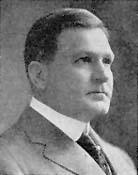CORRECTIONThe Department of Correction is the largest department of its kind in existence. It has the care and custody of all violators of the law who have been apprehended and held in default of bail awaiting trial in the various courts throughout the City of New York, exclusive of the Boroughs of The Bronx and Richmond. It holds also in custody, awaiting transfer to their respective institutions, persons convicted and sentenced to State prisons, New York State Reformatory at Elmira, and the New York State Reformatory for Women at Bedford; also Federal prisoners. It has the care and custody of persons convicted of crime and sentenced to any one of the institutions in this department. During the year 1922 this department received approximately 46,215 men and 5,399 women. There are 20 institutions for the detention and confinement of persons committed to our care. Of these, eight are district prisons, one traffic detention prison, House of Detention, City Prison, Manhattan (the Tombs); City Prison, Brooklyn; City Prison, Queens; New York County Penitentiary; Correctional Hospital (Women's Workhouse); Municipal Farms, Rikers Island; the Reformatory Prison, Hart's Island, New York City Reformatory, New Hampton; Warwick Dairy Farm, Warwick; New York City Women's Farm Colony, Greycourt, Orange County, New York. The Department tries to rehabilitate inmates, with the hope of returning them to the community as useful members of society. Progress Since ConsolidationPrior to 1898 the functions of this department were purely custodial and were administered by the Department of Charities and Correction. Correction was naturally submerged and funds were doled out grudgingly, with the feeling that the City was performing a necessary but highly unprofitable task. In 1915 the Parole Law was passed, and in 1916 the power to develop clearing houses for the study, classification and segregation of offenders was given.
Twenty-five years ago prison conditions were so deplorable that a radical change was necessary. In 1898 the inmates were committed for a definite period. Their hair was cropped and they were furnished with a degraded uniform of stripes. Those afflicted with blood diseases mingled freely with the apparently healthy. The wardens tried to separate those who could work from those unfit for labor. Work consisted, mainly, of police duties around the prison or breaking rock. No trades were taught nor was any attempt made to return the men to society better than when received. Inmates were punished for infraction of the rules by confinement in dungeons and conditions prevailed which fostered a revengeful spirit among inmates. The overcrowding in the prisons and the necessity of having two or more inmates in one cell developed a degeneracy that was shocking. The prisons of that day were schools for crime. Young boys arrested for minor offenses developed from their associates in prison a real aptitude for crime, and, upon release, became a greater menace to society than before. Changes for the BetterSince 1913 an effort has been made to develop a policy in the treatment of offenders. Legislation was enacted giving the Commissioner the necessary powers to properly investigate criminology. The Parole Law and the act establishing clearinghouses resulted. There was, however, no distinct physical change other than minor improvements in sanitation and general welfare. It remained for the present administration to inaugurate and accomplish the real work that has marked such a great change in the handling of delinquents. Departmental ImprovementsGrounds for farms were acquired in Orange County. New buildings were erected and equipped along modern scientific lines. The present general hospital for women was developed and the former workhouse is now a woman’s institution. The Bureau of Audit and Accounts and Stores Control was extended. The general storehouse on Blackwell's Island was improved. An institutional storehouse was placed in each institution, giving a better control of food supplies, eliminating waste and reducing the cost. Through a steward’s bureau, the food is greatly improved. A scientific dietary is prepared. The old wooden mess hall tables, tinware and crockery have been replaced with white enameled porcelain top tables and aluminum ware. To enable the department to be at all times informed as to the receipt, status and discharge of all inmates, the Bureau of Registration and Passes was created to effect proper classification of inmates, fingerprint identification was extended and the Central Bureau of Identification was established. The Bureau of Transportation has been motorized. This Bureau transfers all prisoners between courts and prisons and handles all department supplies. Modern machinery has replaced old, antiquated tools. Inmates are given excellent courses in modern methods of manufacture. Articles manufactured at this institution are sold to other City departments.- Drug AddictionRiker's Island is the hospital for the treatment of male drug addicts. It frequently happens that a man brought to the reception hospital primarily for drug addiction is found to be suffering from an infectious disease. These cases are retained at the Penitentiary and sent to Riker's Island for after-care. This policy has had favorable effect. Climatic conditions of the island are perfect. Graded exercises are given. The group sent for hospital cure is segregated from other prisoners. They are placed in the best surroundings, and receive efficient treatment. The Department of Correction does not receive self-committed drug addicts. All drug addicts must be sentenced for some crime or misdemeanor, generally as vagrant. All drug addicts are potential criminals. The lack of criminal acts in the so-called respectable drug addict results from his ability to obtain the drug. Let him be deprived of the drug by lack of funds or opportunity and you will find him a criminal who will stop at nothing to obtain his supply.
|
![[1923 show book.]](../gif/25jnl01a.jpg)
